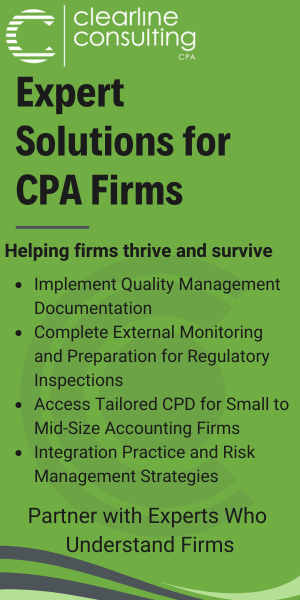You Can Hide … But CRA Will Find You

Timothy Dunn of Minden Gross LLP on why the CRA may be coming after lenders, creditors and owners of struggling businesses
DURING difficult economic times, there is a tremendous temptation on the part of struggling business owners to finance the business by not remitting the required amounts for source deductions and HST. Not surprisingly, this decision can result in adverse financial consequences for the directors and secured creditors of the business.
It may seem like an easy out at the time, as these remittances are based on a self-assessing tax system that will not immediately recognize a less-than-full payment. Indeed, the pandemic has assisted in this regard as Canada Revenue Agency (CRA) stopped doing the usual audits that would typically identify under- or no-remittance situations.
However, the word on the street is that CRA is hiring more collectors and more personnel to clear the accumulated backlog of audits. This is bad news for any business owner who has been hoping that the taxman will be preoccupied with bigger fish. Not so. CRA will come knocking at some point.
Deemed Trust Revenue
You may ask why CRA is so keen to ensure it gets all of the deemed trust revenue associated with source deductions and HST. Good question. And there is a good reason.
When the Income Tax Act was amended in the 1990s, CRA and the Department of Justice dispatched representatives for a cross-country dog and pony show to explain to the tax and insolvency communities why it was so important to create the fiction of a "deemed trust"[1] — to protect collection of source deductions and, to a lesser extent, GST remittances (now HST in Ontario). I say a lesser extent for HST, as the deemed trust nature of this remittance obligation is downgraded to an unsecured claim in a bankruptcy - unlike unremitted source deductions, which retain their super-priority star status regardless of a bankruptcy.
The bottom line in the 1990s was that source deductions (i.e., deductions from income made by employers on behalf of employees for Canada Pension Plan (CPP), Employment Insurance (EI), and Income Tax) made up over 80% of the tax revenue collected by the Crown. Revenue that is essential to funding social services and other government programs. I don't expect that this percentage has changed much over the years, and with the escalating government stimulus money expended through the pandemic, it is safe to assume that CRA will be looking to maximize its recovery of all tax revenue — especially the super-priority deemed trust variety.
What Does This Mean?
Well, nothing good for a defaulting business owner. It is also bad news for any secured creditor of the business.
If you are a director of a corporation that has not paid the required amount of source deductions and HST, these obligations are a personal obligation of all directors. CRA will be quick to remind you of this obligation when they learn of your failure to remit.
CRA may also notify the operating and other secured lenders to the business by presenting them with third-party requirements to pay. Simply stated, when CRA has been unable to collect the required source deductions or HST from the defaulting tax payer, it may send a requirement to pay to a third party (such as a bank) that owes (or will owe) money to the tax payer and require the third party to pay CRA instead of the tax payer. Needless to say, when a secured lender receives such a requirement to pay, it considers this a bad turn of events and will likely freeze the tax debtor's bank accounts.
Am I Protected As A Lender?
If you are an operating lender, the super-priority status of the deemed trust remittances gives CRA priority over all of your borrower's assets and ahead of your security, to the extent of any unremitted source deductions and HST (outside of a bankruptcy).
If you are a conventional mortgage lender to a business, you may be under the impression that you have priority over CRA and that the failure to remit does not affect you. Unfortunately, this is incorrect.
While it is true that the legislation provides a conventional mortgage lender with some protection in the form of a "prescribed security interest" - this is only a limited protection. For example, if a mortgage lender has advanced all of its loan funds on Day 1 of the loan and the borrower subsequently defaults on its remittance obligations on Day 2, the "prescribed security interest" protects the lender for the amount advanced less the amount of any mortgage payments received after the deemed trust arose in favour of the Crown on Day 2 and less the value of any other security held by the lender[2].
Accordingly, it is possible to have situations where a borrower has not remitted the necessary source deductions and HST for months or even years before the default is discovered by either CRA or the mortgage lender. Absent robust reporting obligations or an audit, the self-assessing remittance system can allow under- or no-remittance situations to go undetected for some time.
What Should I Do As A Secured Lender Or Business Owner?
It is imperative that secured lenders closely monitor remittance obligations and ensure meaningful reporting covenants are built into the governing loan agreement - even if the loan facility is a simple conventional mortgage. Furthermore, even when a borrower is paying off its loan, a lender must ensure all deemed trusts have been paid. CRA can and will come knocking on your door after the debt has been paid off in the event that source deductions were owing at the time of payout.
If you are a business owner who has succumbed to the temptation to finance your business at the expense of CRA, hoping to remain under the radar is not a viable strategy in the long term.
As scary as the prospect may be, the better approach is to seek some advice from an insolvency professional on how to confess to both CRA and your secured lender before they discover the truth and come looking for you - and they will.
Being proactive is invariably the best plan and there are some insolvency options available to struggling businesses that can and should be explored to not only save the business from a CRA collector and/or an irate secured lender, but to also save a director from a personal exposure that may cause unnecessary financial ruin.
Footnotes
1. The "deemed trust" is a legal fiction as it is created solely by the language of the governing statute and would not otherwise be considered a trust under general trust law principles.
2. Simply stated:
Amount
|
= |
Amount
|
minus |
Mortgage payments
|
minus |
Value of other
|
Timothy Dunn is a Senior Partner and Chair of the Financial Services Group at Minden Gross LLP. This article was originally published on the Minden Gross website. Author photo courtesy Minden Gross LLP.








(0) Comments